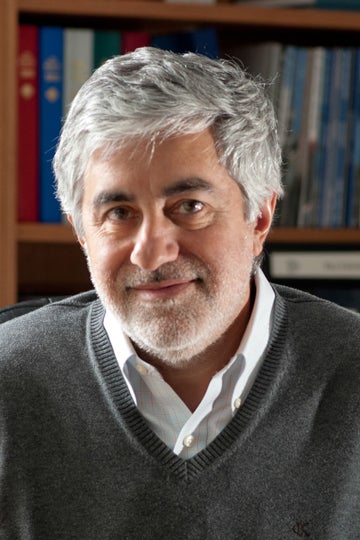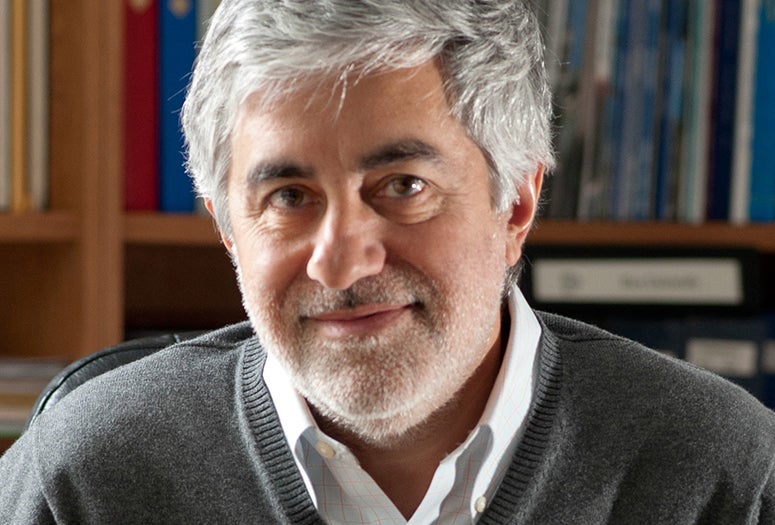by Jade Boyd
Special to Rice News
Rice University’s Gustavo Scuseria, whose pioneering quantum computational methods are widely used to study molecular and solid-state materials, has won the 2024 Aneesur Rahman Prize for Computational Physics.

Given annually by the American Physical Society (APS), the prize recognizes outstanding research achievement in computational physics and includes a $10,000 award. In announcing the prize today, APS cited Scuseria’s “groundbreaking development and application of screened hybrid density functional and ab initio methods to the accurate modeling of molecules and solids.”
Unusual material properties like topological order and unconventional superconductivity arise from intertwined quantum states that no computer can disentangle. With precisely computed solutions for quantum states off the table, researchers must rely upon approximations to model and simulate the unusual electronic structures of quantum materials.
Scuseria, a chemist, physicist and materials scientist, pioneered dozens of approximation techniques that reproduce the properties of many-electron systems well enough to predict new materials structures that were later verified by experiment. His techniques have been cited nearly 100,000 times in peer-reviewed publications and an even greater number of times in studies that made use of his approximation algorithms in software.
Scuseria, the Robert A. Welch Professor of Chemistry in the Wiess School of Natural Sciences, said he’s honored to receive the Rahman Prize.
“Looking at the people who won it before, it’s a pretty prestigious list,” Scuseria said. “Some of the names are of people who studied soft condensed-matter physics, so it’s more broad than electronic structure.”
Within four years of receiving his Ph.D. from the University of Buenos Aires in 1983, Scuseria made a seminal breakthrough in ab initio wave function theory, formulating the first coupled-cluster method with the necessary accuracy to make realistic chemical predictions for virtually any stable molecule of any size. Within a year, he joined Rice, arriving on campus in 1989 to work with Nobel laureate Rick Smalley and others in the burgeoning field of nanoscience.
The Rahman Prize recognizes Scuseria’s coupled cluster work and other achievements from the late 1980s to the early 2000s. He said he’s proud of that research and its impact, but his interests shifted more than a decade ago to focus on strong electron correlations, one of the most difficult unsolved problems in computational quantum chemistry and condensed matter physics. To tackle it, Scuseria’s research group is using a mathematical concept called dualities.
“If we want a solution to the strong-correlation problem, we really need to look in places where nobody has looked before,” Scuseria said. “With dualities, the idea is to solve a problem that is intractable in one area of mathematics or one physical system by transforming it into a problem that is very tractable in a different area or system.
“A lot of dualities have been established,” Scuseria said. “They’re a big deal. Andrew Wiles’ proof of Fermat’s Last Theorem has a step which involves a duality. He got stuck there for years, but then he was able to solve it by mapping the problem to a different thing.”
For strong correlation approximations, the idea is to map them from the physical frame of reference to a dual frame. Scuseria said that other potential applications of dualities involve the fermion sign problem and novel approaches to performing quantum error corrections in quantum computers.
“The exact answer is the same in each frame, and maybe the cost to get the exact answer is the same, but approximations are totally different,” he said. “In the physical representation, an approximation might be far from the exact answer, but an approximation in the dual version might get you 80-90% close to the exact answer.”
Scuseria said the idea that unsolvable problems can be made solvable by viewing them from a different perspective “sounds like science fiction in a way. But we have two papers showing that if you map a spin problem — a very well-defined spin problem that is very complicated to solve — to fermions, and then solve it in the fermion frame, a simple approximation gets you close to the exact answer.”

